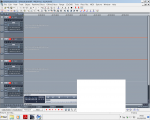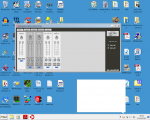Yeah but as I keep saying syncing PCI cards designed to work that way (or any interface designed to sync somehow) is a different kettle of fish from plugging in two free
Ah, just pointing out Bobbs that the Delta cards simply sync via S/PDIF and therefore it MIGHT help with two alien USB interfaces?
BTW. Don't know why the quote function chopped the last part of your post off. Tried it twice!
Dave.
Maybe it's because I bit my tongue (and I mean that literally rather than figuratively) earlier today?
Anyway, if you think about it, the S/PDIF syncing is nothing unusual. Any time you have a digital signal running into another digital box, there has to be a system to synchronise the word clocks. The "receiving" device will usually lock and sync to the incoming signal (since the other way around is impossible!).
I use a lot of ADAT inputs on my digital mixer and, theoretically, I can daisy chain the TOSLINK fibres and have the sync to each other. I've tried it and it works..but in a live situation I feel safer distributing word clock properly.

 )
)

